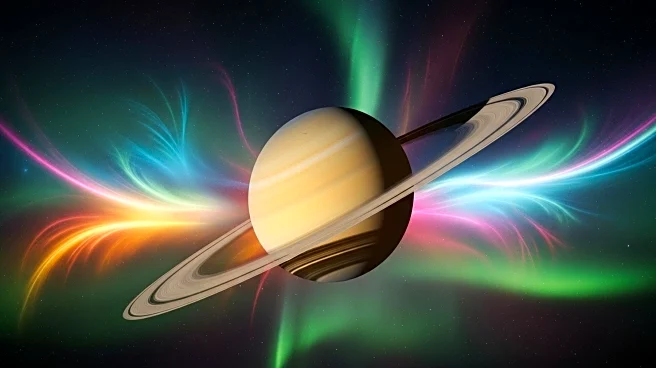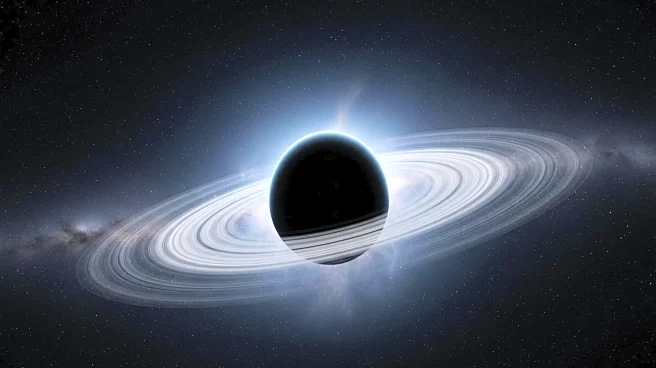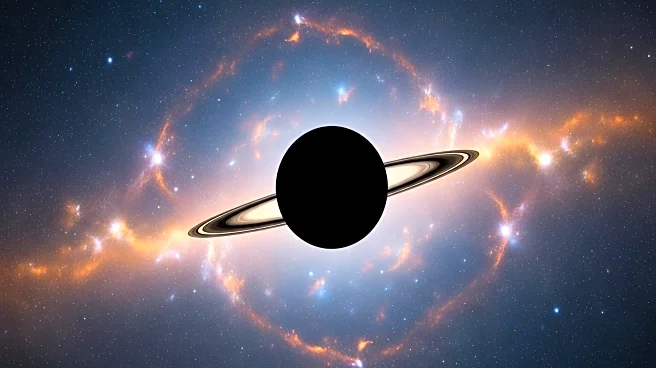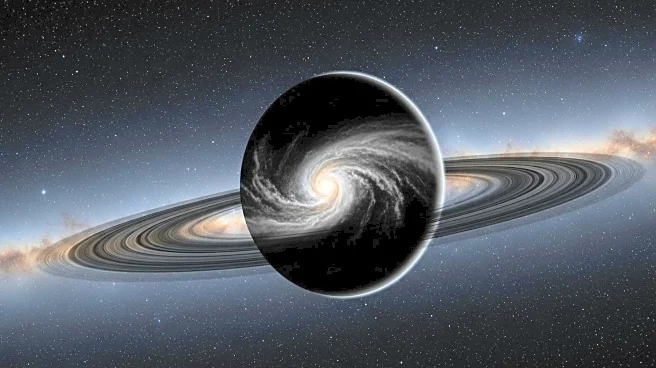What's Happening?
The James Webb Space Telescope has revealed unprecedented patterns in Saturn's atmosphere, including bead-like structures and a star-shaped pattern at the north pole. These findings were made during a ten-hour observation session using the Near-Infrared Spectrograph, which captured detailed maps of Saturn's upper atmosphere. The telescope detected rotating auroral additions and dark beads spread across the ionosphere, which are unlike anything observed on other planets. The discovery was presented by Tom Stallard, a planetary scientist at Northumbria University, at the EPSC-DPS 2025 Joint Meeting in Helsinki. The beads may result from turbulence caused by powerful winds shearing against each other, creating Kelvin-Helmholtz instabilities.
Why It's Important?
These findings are significant as they provide new insights into the atmospheric dynamics of Saturn, which could enhance our understanding of similar processes on Earth. The ability of the James Webb Space Telescope to detect these faint emissions demonstrates its advanced capabilities, potentially leading to improved atmospheric models for other planets. The research could also inform future studies on Jupiter, Uranus, and Neptune, offering a broader understanding of planetary formation and behavior. For Earth, the study of Saturn's atmospheric turbulence and wind shear may improve forecasting of our own upper atmosphere, which is challenging to observe directly.
What's Next?
The research team, comprising scientists from the UK, US, France, and Japan, plans to continue analyzing the data to understand the relationship between the bead structures and the star pattern. Further observations by the James Webb Space Telescope may reveal more about the dynamics of Saturn's atmosphere and its famous hexagon. The findings could lead to comparative studies across other gas giants, enhancing our knowledge of planetary atmospheres and potentially aiding in climate prediction models on Earth.
Beyond the Headlines
The discovery of these atmospheric patterns on Saturn highlights the complexity and mystery of planetary atmospheres. The research opens new avenues for understanding the interactions between different atmospheric layers and their impact on planetary weather systems. It also underscores the importance of international collaboration in advancing space exploration and scientific discovery.











